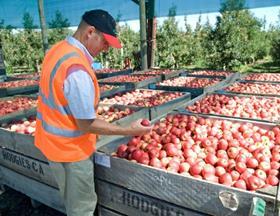
New Zealand orchard models show pipfruit growers can expect a slight increase in profitability this year thanks to a lift in prices.
The country’s Ministry for Primary Industries (MPI) has released an analysis of pipfruit production and profitability based on models of a Hawke’s Bay and a Nelson orchard and information gathered from a sample of growers and industry stakeholders.
According to a media release from the ministry, a cool spring delayed flowering and harvest by around two weeks this season. Hawke’s Bay also had below-average temperatures and low sunshine hours.
As a result, overall, production and sizing was more variable than usual, with Royal Gala in particular significantly smaller. On the other hand, fruit colour and quality were generally excellent, the media release stated.
A delay to harvesting this season meant a shorter window than usual for early-season sales in Asia before the arrival of competing southern hemisphere supplies.
Sales into Europe have benefitted from a significant reduction in exports from the main southern hemisphere suppliers. Import prices in Europe are substantially higher than last year, and will help to compensate for the high value of the New Zealand dollar against the euro and the pound, said MPI senior policy analyst Annette Carey.
“Growers are particularly welcoming the expected lift in the return for Jazz this year. It’s looking like they will receive an average of NZ$22 (US$17.90) a carton after getting $19 last year.” The Hawke’s Bay orchard model shows a typical owner-operated orchard in the region in 2012 should make $76,000 before tax, while the Nelson model shows a profit of just $13,300 before tax. This would be the first profit achieved by the Nelson orchard model since 2008.
MPI reports low profitability in recent years is driving change in the industry. Vertically integrated businesses appear to have an advantage over grower suppliers in the current environment. Margins they gain from provision of post-harvest services or marketing are offsetting any orchard losses. Further rationalisation of the industry is considered likely.
The pipfruit sector is optimistic about the potential for market expansion in Asia in the medium term, with outcomes from research and development programmes helping to meet pest, disease and residue requirements.



